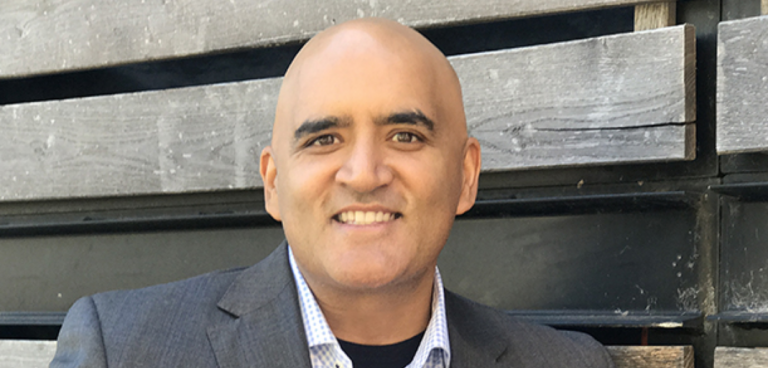ITS America’s president and CEO Shailen Bhatt has taken a cooperative stance on the controversial issue of spectrum sharing for V2X technology in the USA, by declaring the transportation community open to the idea – if it can be proved beyond doubt that there is no detriment to road safety.
Speaking exclusively on the latest edition of the TTI podcast Bhatt tells TTI editor Tom Sone that, contrary to some industry voices, the idea of sharing the 5.9GHz wi-fi spectrum, currently reserved for safety critical transportation functions, should not be dismissed out of hand. Rather such an idea should be explored scientifically, with thorough testing, before jumping to any conclusions.
“We’re open to sharing the 75 megahertz of the spectrum with unlicensed devices, provided that you can show that those unlicensed devices – the wi-fi signals – would not interfere with safety critical communication between vehicles,” says Bhatt.

Speaking about the recent temporary spectrum sharing in the band that the FCC allowed in the midst of the coronavirus lockdown in the USA Bhatt continues: “What the FCC had done was authorize use of the 5.9 band, but only in rural areas right which, again, we think is a fine approach. But what we need them to do is to complete the testing that says that unlicensed devices and safety critical messages can coexist. And if it’s going to be in an urban environment, then don’t use channels that bleed out into the street level. So, if you’re in a tall building, on the fourth floor and up, maybe it could work.
“We remain committed to safety – safety is our number one priority. But we also recognize that you have to balance the needs of others. But there shouldn’t be a competition between streaming video on cafe sidewalks so you can watch Netflix, and a vehicle that’s trying to communicate to other vehicles – to infrastructure to cyclists to pedestrians and others, as we move into this more connected world.
“That’s why we have repeatedly asked for the FCC to complete the congressionally mandated testing that was required. We know for a fact that Ford and others have done testing in Ann Arbor, Michigan, in which, when they put unlicensed devices into the spectrum, there was an absolute impact on the range at which connected vehicles can communicate. The distance gets shortened to the point where you can’t do things like emergency braking or some of these other safety critical manoeuvres and so again we’re completely open to sharing but they need to complete the testing.”
The FCC is currently considering whether unlicensed wi-fi should be allowed access to the 5.9GHz spectrum for any number of communications not related to transportation safety, but has not yet reached any final conclusions.
To hear the full interview with Shailen Bhatt, in which he also talks about the ITS World Congress, electric vehicles and much more, listen to the latest edition of the TTI Podcast.





